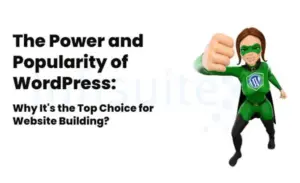You spend hours crafting the perfect website: captivating visuals, clear calls to action, content that reads like a dream. You hit publish, brimming with pride, only to check it on your phone and be greeted with a digital nightmare – everything squished together, buttons disappearing into the abyss, and text so tiny it requires a magnifying glass (and maybe a lie down in a dark room). Deflating, right?
Here’s the good news: this frustration can be a thing of the past. Enter responsive design, the secret weapon that equips your website with the power to adapt and thrive on any screen, from the expansive monitors of desktop computers to the pocket-sized wonder of smartphones.
Think of it this way: the internet used to be a desktop-dominated landscape. But with the rise of mobile devices, the way we access information has undergone a seismic shift. We’re constantly connected, consuming content, shopping, and socializing – all through the magic of our phones and tablets. If your website isn’t responsive, it’s like putting up a “Closed for Business” sign on a significant portion of the digital world.
But fear not, web warriors! Mastering responsive design isn’t about wielding arcane coding spells. It’s about understanding a few core concepts that will unlock a world of device-agnostic awesomeness.
The Foundation: Building with Flexibility
Imagine your website as a house. In the old days of web design, this house would be built with rigid walls – a fixed width that looked great on a desktop but left mobile users peering through metaphorical cracks. Responsive design is all about creating a house with flexible walls that can expand and contract to accommodate any size of visitor.
This adaptability hinges on the fluid grid system. It’s the invisible framework that holds your website together. Instead of using fixed pixel values for widths, the fluid grid system relies on percentages and clever CSS tricks. Think of it like a yoga mat – it adjusts and stretches to fit any body type (or in this case, device type). This allows elements on your website to resize and rearrange themselves seamlessly, ensuring everything stays clear and readable regardless of the screen size.
Media Queries: Checkpoints on the Screen Size Journey
Now, imagine your website as a road trip across the vast landscape of screen sizes. Media queries are like strategically placed checkpoints along the way. At each checkpoint, you can tell your website to adjust specific elements based on the size of the screen.
For instance, on a wider desktop screen, you might display a website with a three-column layout. But as the screen size shrinks on a tablet, a media query can kick in, instructing the website to switch to a two-column layout. On a tiny phone screen? Media queries can ensure the website stacks elements vertically, making everything easily accessible with a touch.
Media queries give you granular control over how your website adapts, allowing you to hide unnecessary elements on smaller screens, adjust font sizes for optimal readability, and even swap out images for lighter versions that load faster on mobile data connections.
Mobile-First: A New Way of Thinking
Traditionally, web design followed a “desktop first” approach. But in today’s mobile-first world, it’s time to flip the script. Responsive design champions a “mobile-first” mindset. Here’s the logic: if your website looks fantastic and functions flawlessly on the smallest screen, enhancing it for larger devices becomes a breeze. It’s like building a strong foundation for your house before adding the fancy rooftop deck.
By prioritizing mobile-friendliness, you ensure that the core user experience is exceptional, no matter the device. This translates to a happier user base and, let’s be honest, a happier you!
Beyond the Technical: The Power of Empathy
Responsive design isn’t just about technical wizardry. It’s about demonstrating empathy for your visitors. It’s a way of saying, “Hey, I know you might be using your phone or tablet, and that’s totally cool. I’ve made sure you have a fantastic experience on my website, regardless of the device in your hand.”
This user-centric approach fosters trust and builds stronger connections with your audience. After all, in today’s competitive online landscape, a positive first impression is crucial. A responsive website ensures that every visitor, no matter their device, feels welcome and engaged.
Ready to Embrace Responsive Design? Resources Abound!
The good news is that you don’t have to become a coding ninja to master responsive design. There’s a wealth of resources available to help you on your journey. From beginner-friendly tutorials and in-depth courses to handy frameworks that provide a head start, there’s something for everyone.








